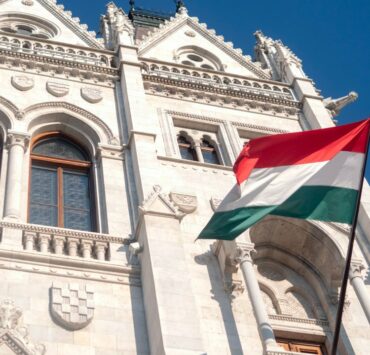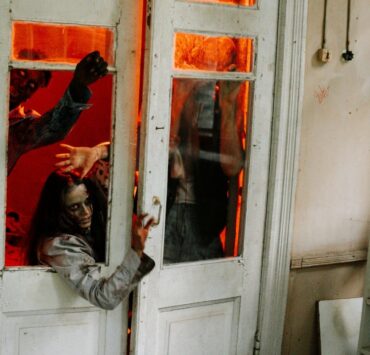You see? Not all global things are terrible. Yes, we have this shit-pickle that I refuse to name at this point, but we also have some celebrations that the entire world takes part in. One such event is Halloween/All Saints’ Day/Day Of The Dead. I think it’s wonderful to see how varied customs all over the world are, yet all are related to the same sentiment: remembering our dead.
In most parts of the world, visiting the graves of loved ones and decorating them with flowers and candles is something families do on these days. However, in many cases, there are some additional traditions people practise. Here are a few fun facts from around the Globe, for your entertainment (and education).
Austria and Bavaria
Frequently, donations of food are given to children who live in poverty.
Children also receive a gift of Allerheiligenstriezel from their godparents, which is a braided form of yeast pastry. They may also walk around the village asking for small gifts with an All Souls song.
In Tirol province however, families leave food in the house for their dead and keep the room warm for them on November 1st. Children put on white shirts and masks, and go door to door, singing songs and reciting poems in exchange for which they are given Krapfen, a donut-like fried pastry, hence the custom’s name, Krapfenschnappen.
A bejegyzés megtekintése az Instagramon
China and Hong Kong
The Qingming or Ching Ming festival, also known as Tomb-Sweeping Day in English is observed in China and Hong Kong on April 4th or 5th, depending on the Moon’s position. Families tidy up their loved ones’ graves, go on outings and fly kites. Food, produce and wine is placed on the tombs, and paper ‘bills’ are burnt so that the dead can have money in the afterlife.
In mainland China, a traditional dish for this day is ‘qingtuan’, which are green dumplings made of glutinous rice and Chinese mugwort or barley grass.
The Qingming festival is also part of a spiritual and religious practice in China. For example, Buddhism teaches that those who die with guilt are unable to eat in the afterlife, except on the day of the Qingming festival.
A bejegyzés megtekintése az Instagramon
The Philippines – ‘Undas’
During Undas, family members visit the cemetery where the body of the loved one rests. It is believed that by going to the cemetery and offering food, candles, flowers, and sometimes incense sticks, the spirit of the loved one is remembered and appeased.
Similar to the trick-or-treating of American Halloween celebrations, Filipinos have Pangangaluluwa. Pangangaluluwa was a practice where people would go from house to house, covered in blankets pretending to be ghosts, singing songs. If the owner of a house failed to give them biko or rice cakes, the ‘spirits’ would play tricks on them by trying to steal slippers or objects left outside, or by running off with the owner’s poultry. These customs are still practised in rural areas.
A bejegyzés megtekintése az Instagramon
The Undas is also seen as a family reunion, where family members coming from various regions go back to their hometown to visit the grave of loved ones. Family members are expected to remain beside the grave for the entire day and socialize with each other to mend bonds and enhance family relations.
Children have important roles during Undas. They are allowed to play with melted candles in front of grave sites and turn the melted wax from the candles into round wax balls. The round balls of wax symbolize the affirmation that everything goes back to where it began, as the living will go back to ash, where everything started.
In some cases, families also light candles at the front door of their homes. The number of candles is equivalent to the number of departed loved ones. It is believed that this tradition aids the dead and provides them with a happy path to the afterlife.
Bolivia and the Andes
November 1st marks Todos Santos, or All Saints’ Day, a day in which Bolivian families gather to welcome the returning dead.
Celebrations begin at midday with a big feast held by families to honour the departed. A shrine to the deceased is set up and a place set for them at the table where they are taken to be present and actively participating in the feast.
On November 2nd, Dia de los Muertos (Day of the Dead) is the day when Bolivian families welcome, commemorate and then finally bid farewell to the visiting dead.
A bejegyzés megtekintése az Instagramon
Families decorate the graves of their dead with flowers and leave food for the deceased, intended as nourishment for the spirit’s journey back to the afterlife. There is also a lot of bread baked for this occasion, much of which is baked into symbolic shapes such as babies, angels, bulls (representing prosperity) and ladders (to help the dead ascend to heaven).
The remainder of this day is spent in the cemetery, where families talk and pray for their loved ones together.
Guatemala
In Guatemala, a few days before All Saints’ Day, families tidy up the tombs to make sure they look good on the day when the spirits of their loved ones come back. Many also paint and decorate the graves with lively colours.
A traditional dish for this day is ‘el fiambre’, an authentic cold dish, made from cold meats, cheeses, fish and vegetables. It usually takes two days to prepare and is eaten by the family together at home, or in the cemetery, surrounding the tombs of loved ones.
A bejegyzés megtekintése az Instagramon
A unique part of this celebration is the kite festival. People make enormous kites out of rice paper and bamboo that vary in colour and design.
These flying giants are used as a way to connect with the deceased. Once the festival is over, the kites are burnt, allowing the spirits to return to their resting place.
Japan – Obon
Japan’s Obon is a three-day festival held in August when people remember their loved ones.
It is believed that on the 15th day of the 7th month – don’t ask… calendars… – the gates of heaven and hell open up and the spirits living there can take a look into the world of the living.
The dead return to the living who create an altar with their dead’s photos, incense, tea and rice. Houses are decorated with lamps so that the spirits can find their way home.
The celebrations are concluded with ‘Daimonji’, when families float lanterns on the river or ocean – I’m guessing any available body of water is acceptable – to accompany the deceased as they return to the afterlife.
A bejegyzés megtekintése az Instagramon
Mexico
Thanks to the popularization of the Mexican Day of The Dead (Dia de Muertos) celebrations, you probably already have sugar skulls popping up in your mind’s eye. But there is a lot more to these traditions.
Families build altars decorated with their favourite foods, beverages, as well as photos and memorabilia, of the deceased. Toys are brought for children, alcohol for adults. Families may also offer trinkets, candies and sugar skulls. These are meant to encourage visits by the souls so that they will hear the prayers and stories told by the families. This can actually be an amusing time as family members recall funny events and anecdotes about the deceased.
A bejegyzés megtekintése az Instagramon
The traditional flower used to honour the dead is the marigold. With its vivid colour and powerful scent, it is believed to help guide the souls from the cemeteries to their families’ homes.
Now go watch Coco!
Halloween – US and Canada
You know this one. 🙂 Children go trick-or-treating, adults dress up and host costume parties and absolutely everyone overdoses on sugar. This one is the source, nay, the heart, soul and essence of my obsession so I’ll save this one for its own dedicated article.
How do you commemorate your lost loves ones?




